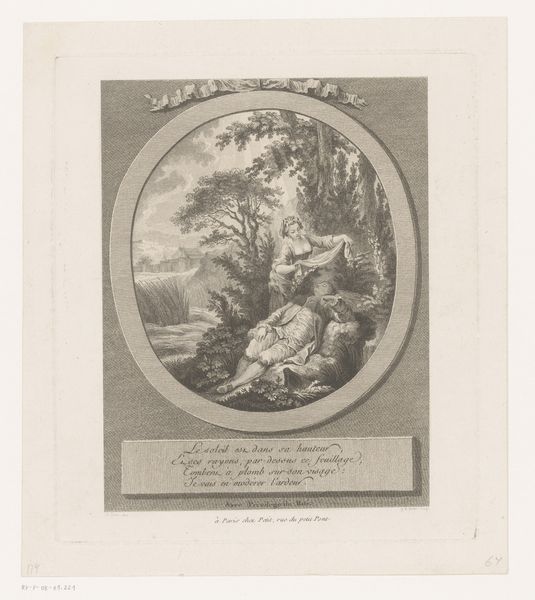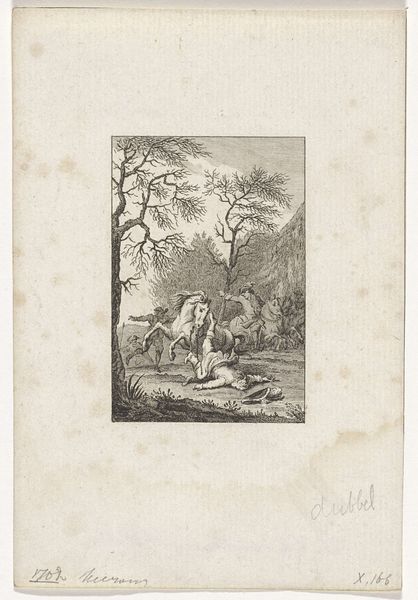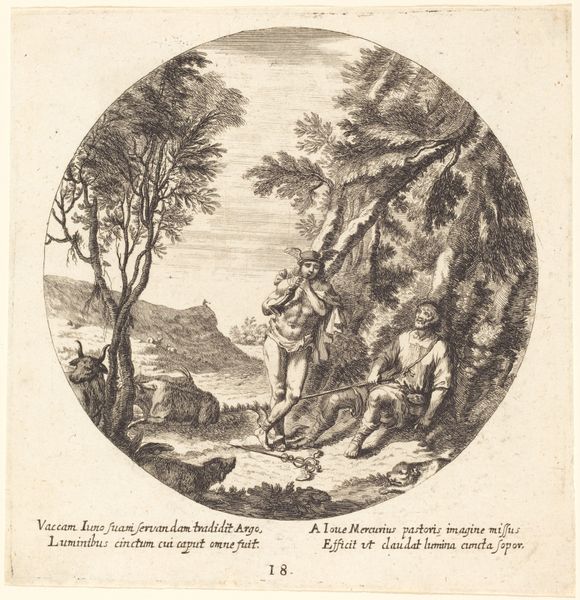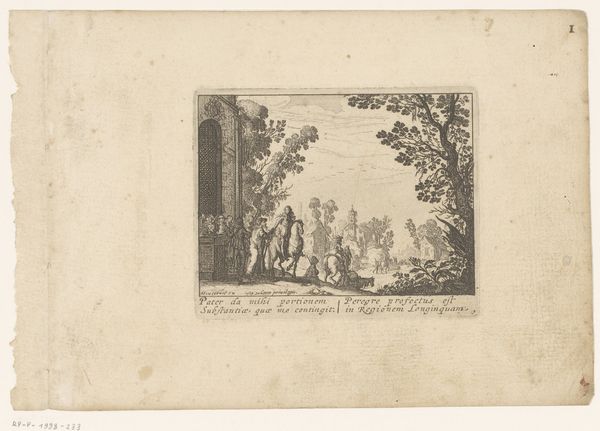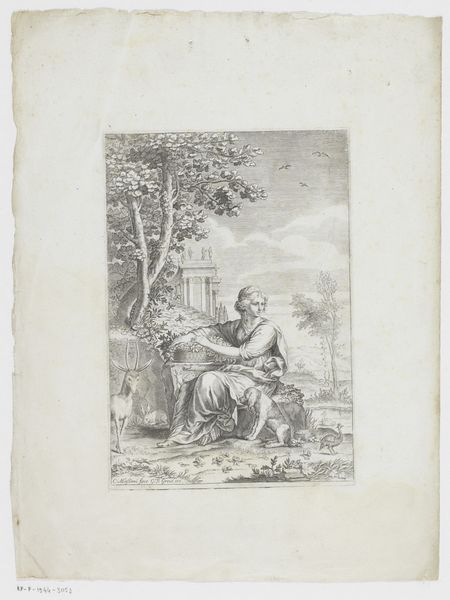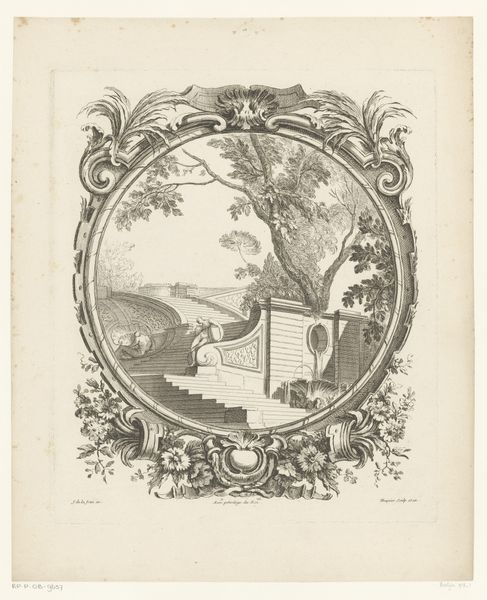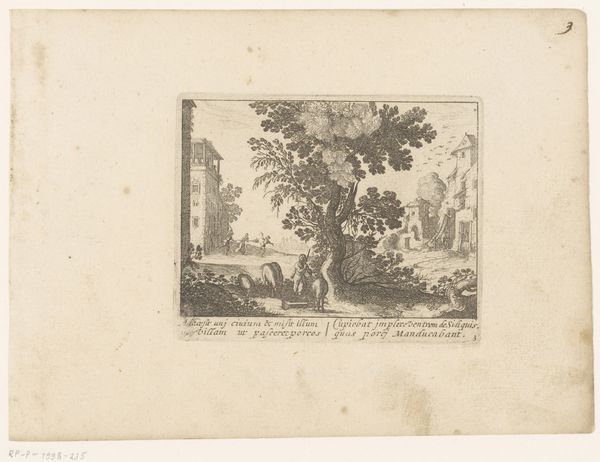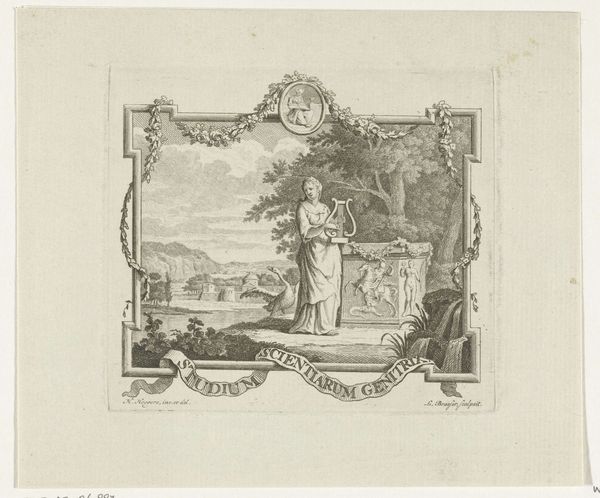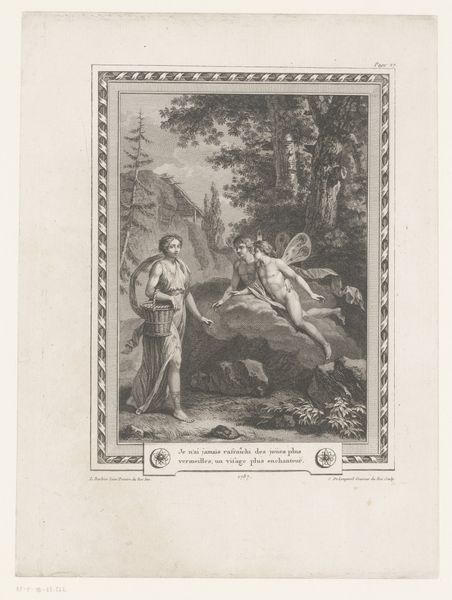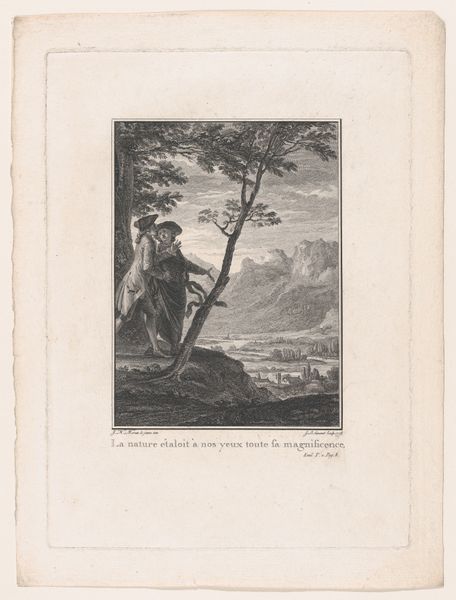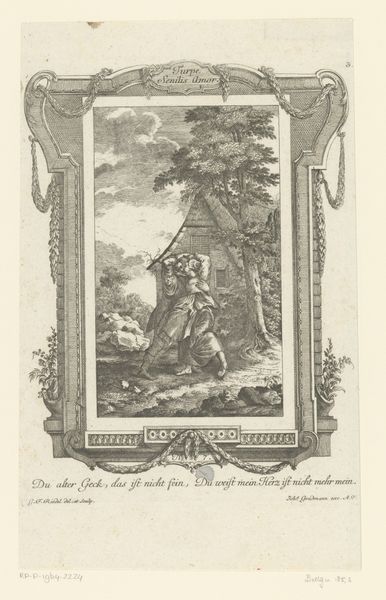
drawing, print, engraving
#
drawing
#
baroque
# print
#
landscape
#
figuration
#
engraving
Dimensions: sheet: 4 5/8 x 4 1/8 in. (11.8 x 10.5 cm) plate: 2 13/16 x 3 15/16 in. (7.2 x 10 cm)
Copyright: Public Domain
Editor: This engraving, “Saint John the Baptist” by Balthazar Moncornet, likely from the 17th century, feels surprisingly intimate despite the grand Baroque style and religious subject. I’m struck by the way the light catches on John’s figure, making him the clear focal point amidst a wild landscape. How do you interpret this work? Curator: The wilderness depicted isn’t merely a backdrop. It's an active participant, a stage for power dynamics between the individual and the natural world, between the sacred and the profane. Moncornet uses the landscape to define John the Baptist's liminal existence, positioned outside of societal norms, living a life of spiritual rebellion. How do you see the sheep fitting into this framework? Editor: It seems to represent the flock that John is meant to guide and the lamb as a symbol of sacrifice and innocence, almost passively observing. Is the theme of innocence preserved common for the time, despite sociopolitical circumstances? Curator: Exactly. And consider this: baroque art, emerging from a period of immense religious and political upheaval, often utilized biblical narratives to reflect contemporary anxieties and power struggles. John’s isolation could be read as a commentary on the individual's struggle against established authority, even the religious institutions themselves. How does the style reinforce this? Editor: The stark contrasts emphasize the isolation, I think. The light literally and figuratively spotlights him away from the chaos and the unknown. Curator: Yes. The deliberate choice of the printmaking medium allowed for wider distribution. Thus, radical spiritual figures could become accessible visual tools to incite critique or fuel personal spiritual discovery beyond formal channels. It asks the viewer to think about accessibility, identity, and spirituality, not just sanctity. Editor: That’s fascinating. I hadn't considered the print medium as a tool for democratization of ideas! Curator: Thinking about the historical context really brings a new dimension to understanding not only the subject but the whole purpose behind the piece.
Comments
No comments
Be the first to comment and join the conversation on the ultimate creative platform.
